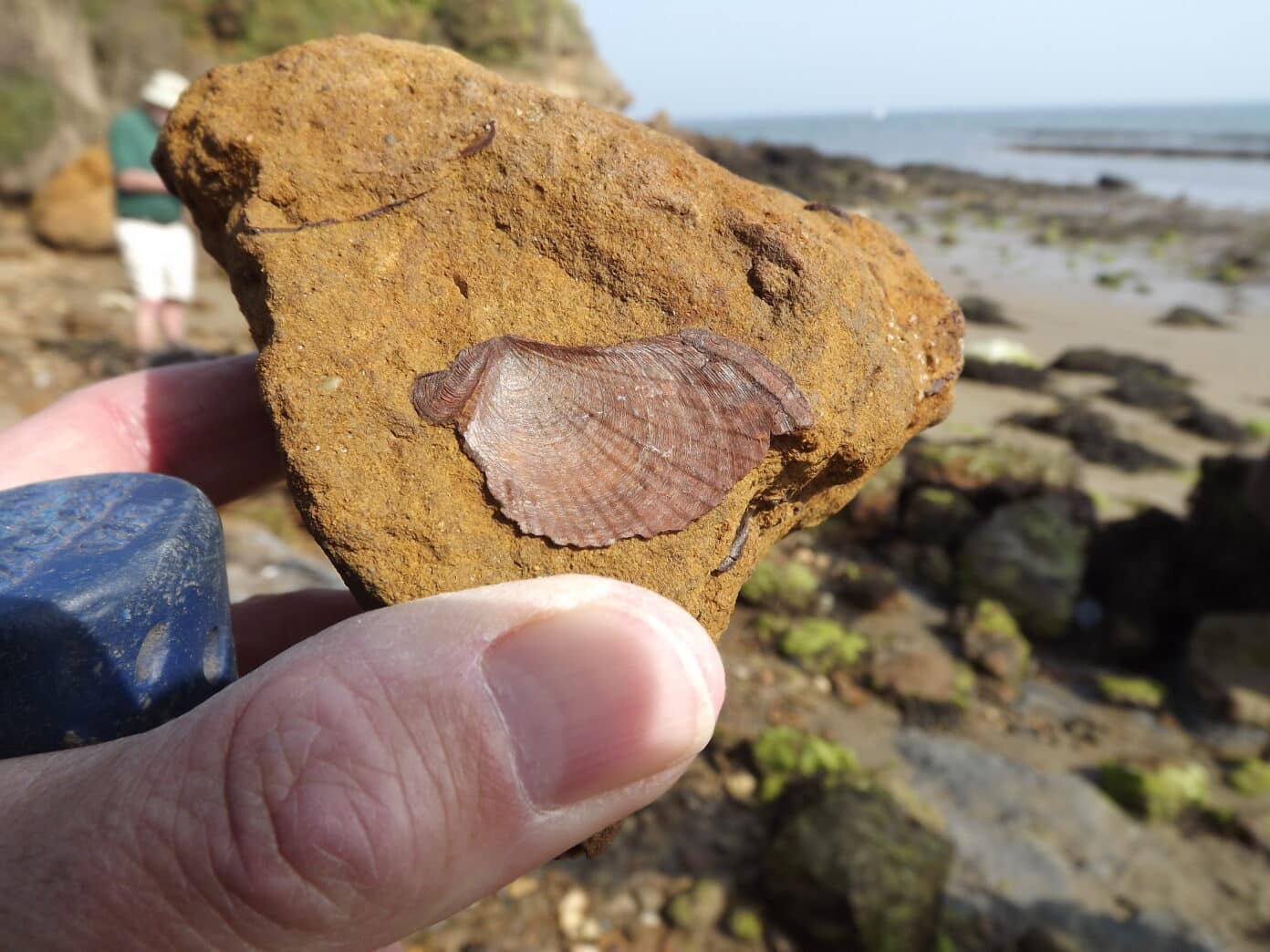After Furzy Cliff moving west towards Weymouth, there is not much geology to see as Lodmoor and the town are underlain by Oxford Clay which is quite soft and easily eroded. The picture below is looking SW from above Furzy Cliff across the Lodmoor RSPB reserve to Weymouth. The offshore reef mentioned in the last instalment can be seen in the bottom left corner of the picture.

The land rises again once you reach the Nothe area to the west of Weymouth Harbour. Here there is a change in the geology from the Oxford Clay to Corallian Sandstone which is slightly harder. In the picture below, the wooded area on the left of the picture is part of the Nothe Gardens and the higher ground in the background is Wyke Hill. Nothe Gardens was affected by serious slipping in the spring of 1988. The seawall in Newton’s Cove has since been rebuilt and rock armour placed near the Nothe Fort so little of the geology can be seen.
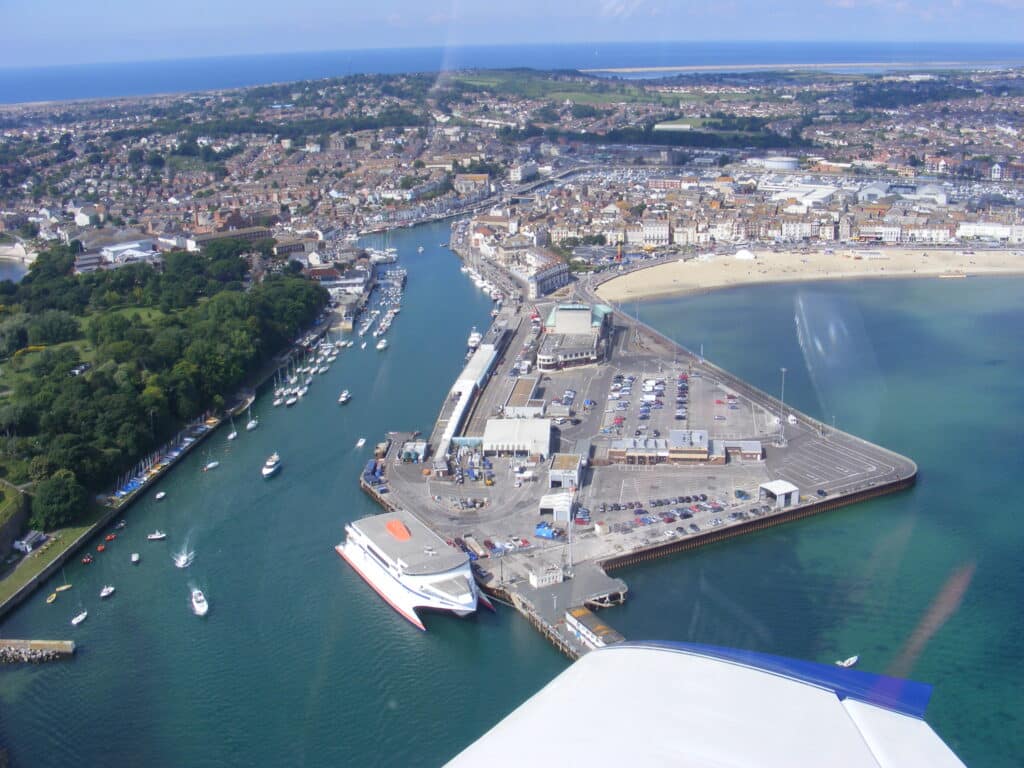
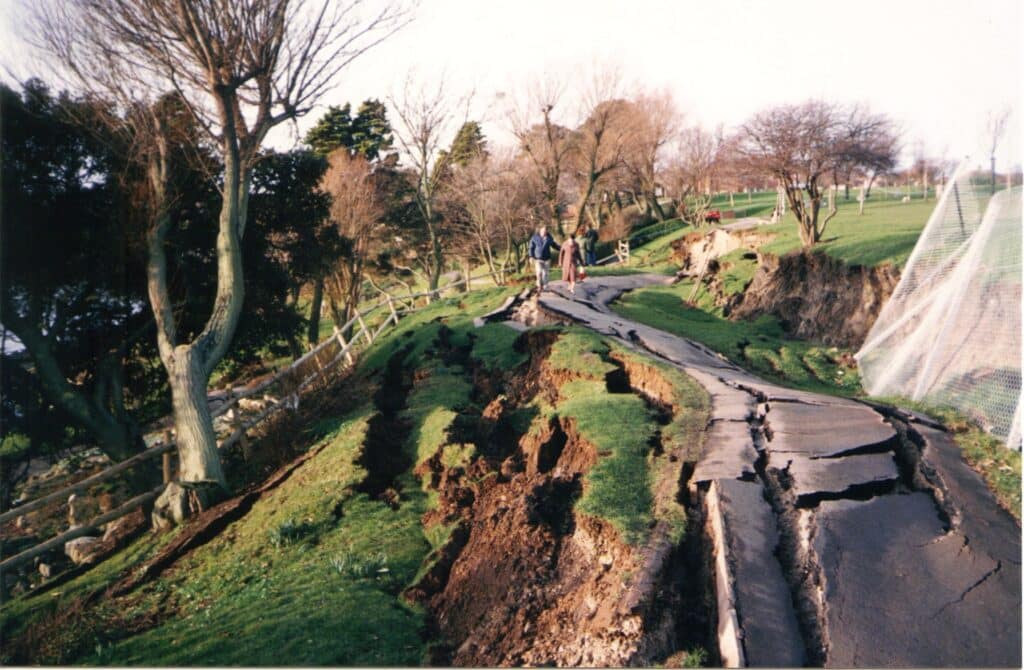
The picture above was taken in 1988 and resulted in the Nothe Gardens being completely re-landscaped. The picture below shows the sea wall as it is now with Portland Stone rock armour. Part of the old sea wall survives and ledges of Corallian sandstone can be seen on the beach.
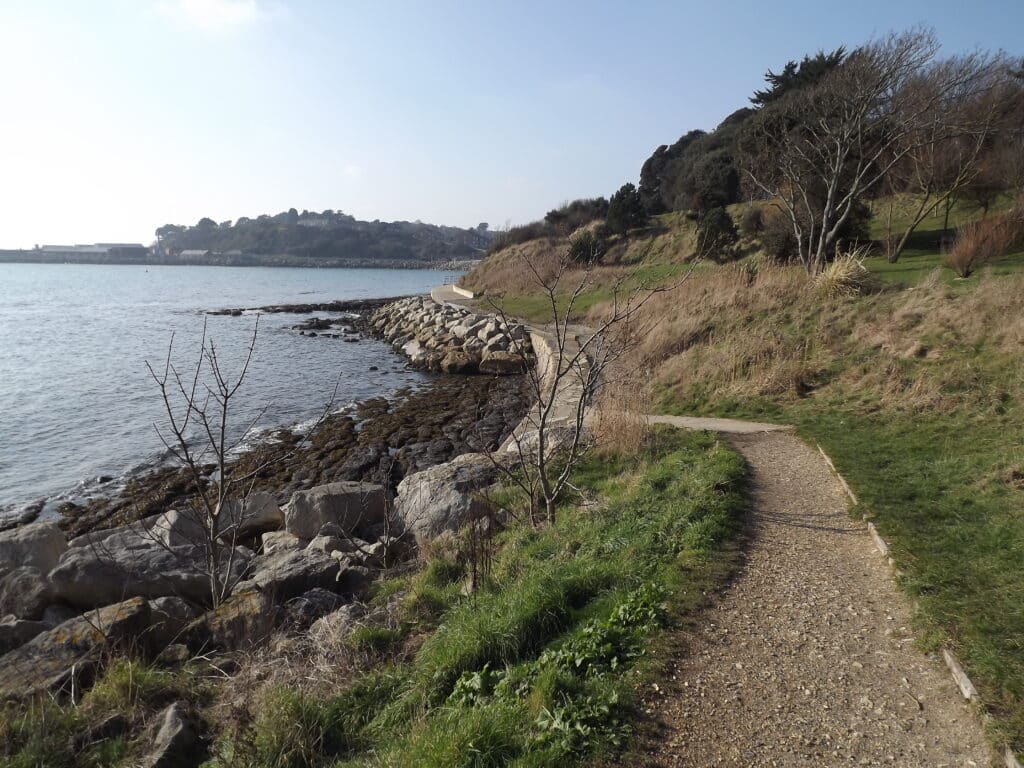
As you walk round Newton’s Cove you will see some attractive carvings in Portland Stone which were part of a stone carving competition at Weymouth College where the theme was related to Jurassic life. Unfortunately carvings do not get the maintenance they deserve!
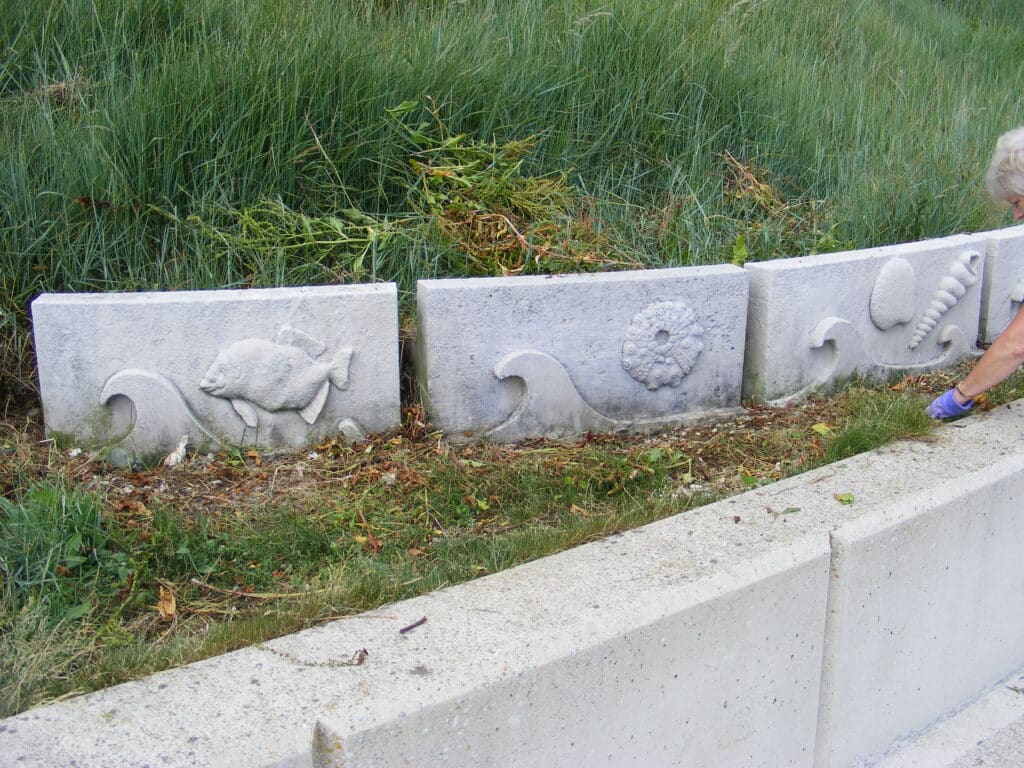
The rock ledges are well exposed in Newton’s Cove but they are best seen at low tide. In the picture below looking east you can see ledges gently dipping out to sea which is the overall dip of the rocks in this part of south Dorset.

As you reach Bincleaves the esplanade is worth looking at with some good examples of Portland Stone some of which is very fossiliferous.
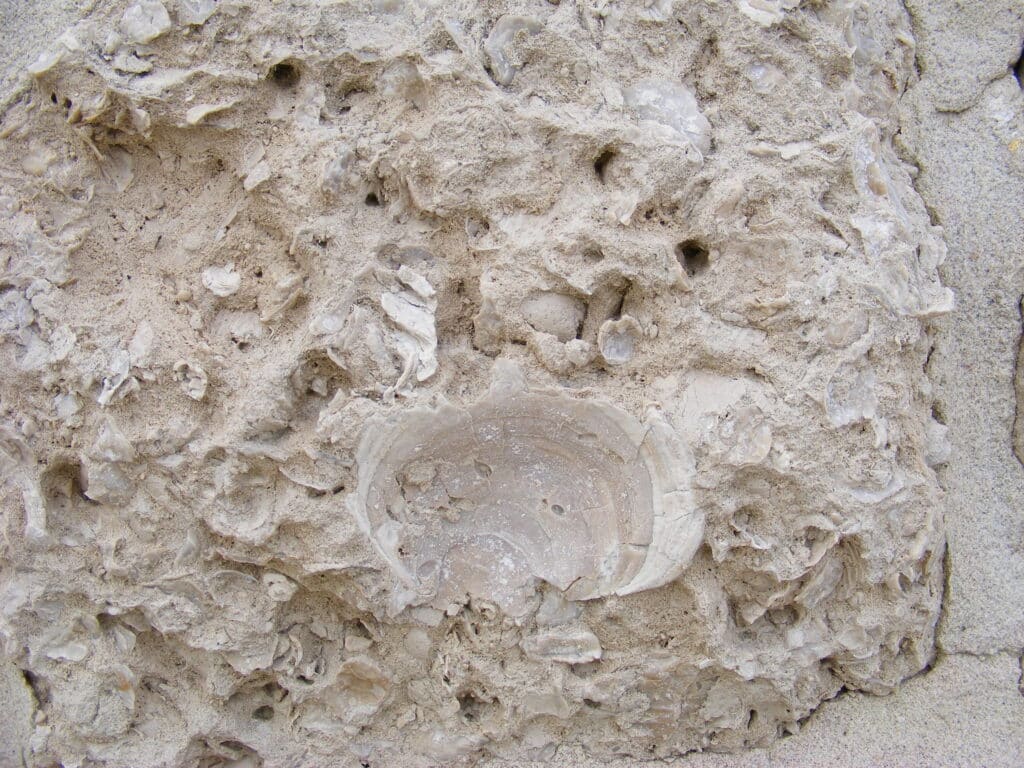
At Bincleaves there is a cliff exposing more Corallian rock but it is not accessible due to it being on Defence Research Agency land. You can walk across the bridge to the public open space at Redcliff View where there a good panorama along the Jurassic Coast to the east and to Portland to the south.
The Underbarn walk was fenced off for some time due to danger from landslips but it is now possible to walk along for a few hundred metres and then get down onto the beach in the landslip area.

It is essential to access this section at low tide because at high tide there is little or no beach to walk on. At low tide the Western Ledges are well exposed and moving SW there are fine views of Sandsfoot Castle, built in the reign of Henry VIII. It is possible to get round the base of the castle at low time and see the Sandsfoot Grit at the top of the Corallian. This is fossiliferous with bivalve shells as well as trace fossils(burrows).
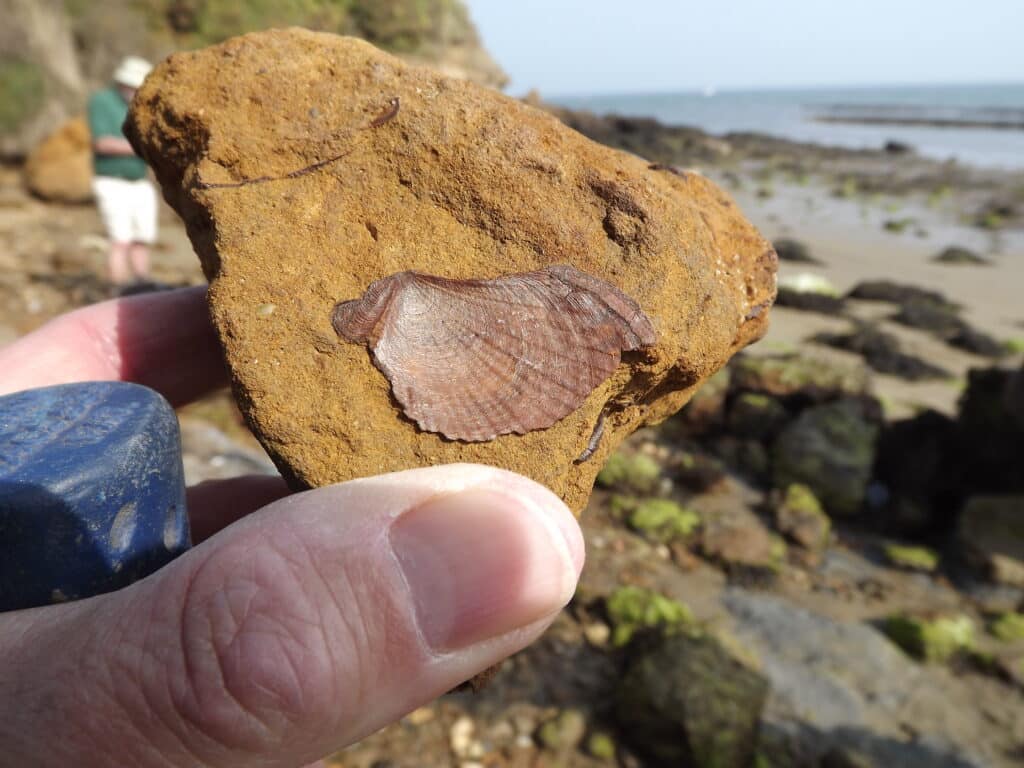
Alan Holiday
PLEASE SUPPORT US FOR JUST £2 A MONTH

